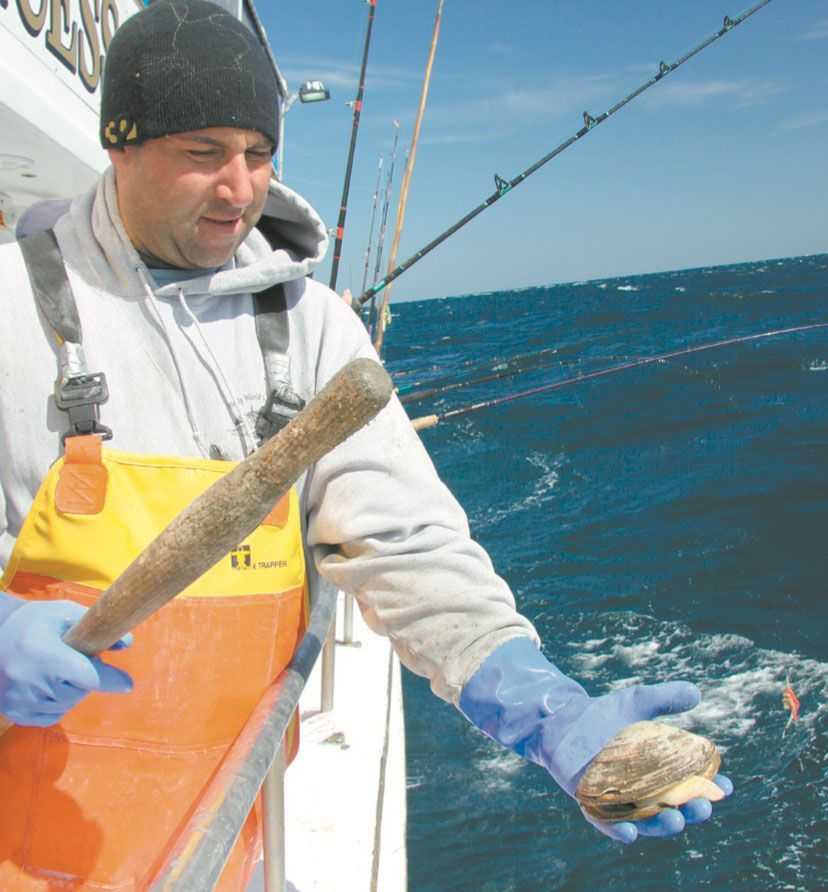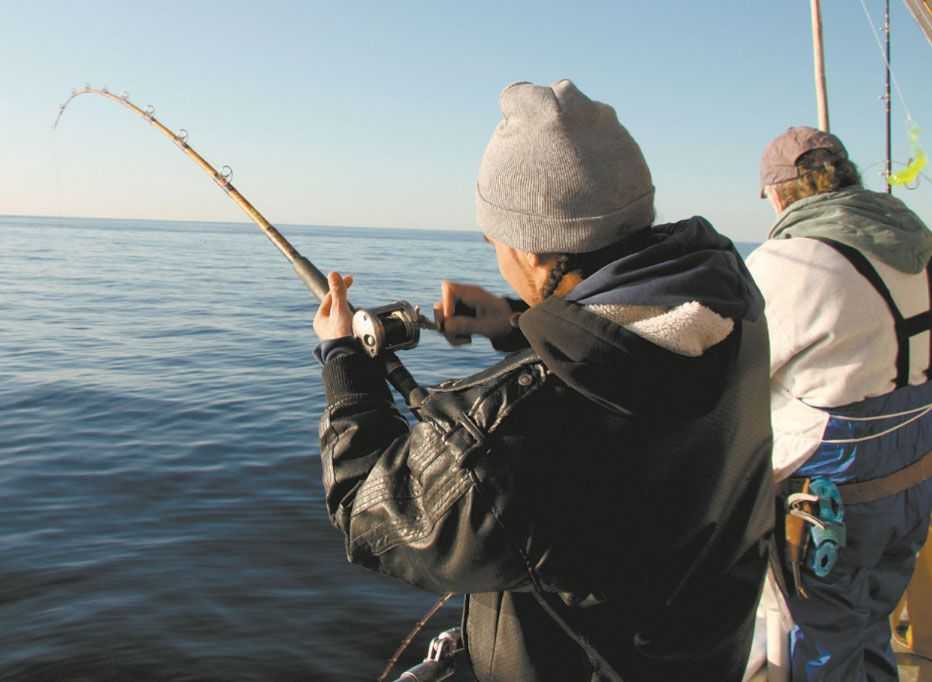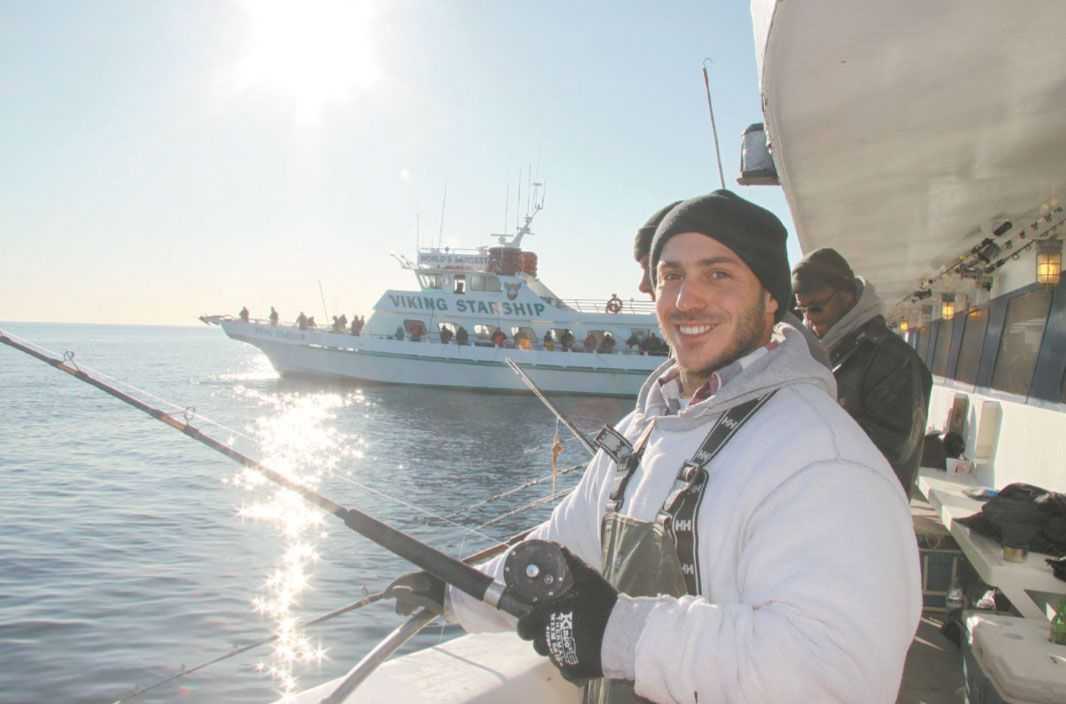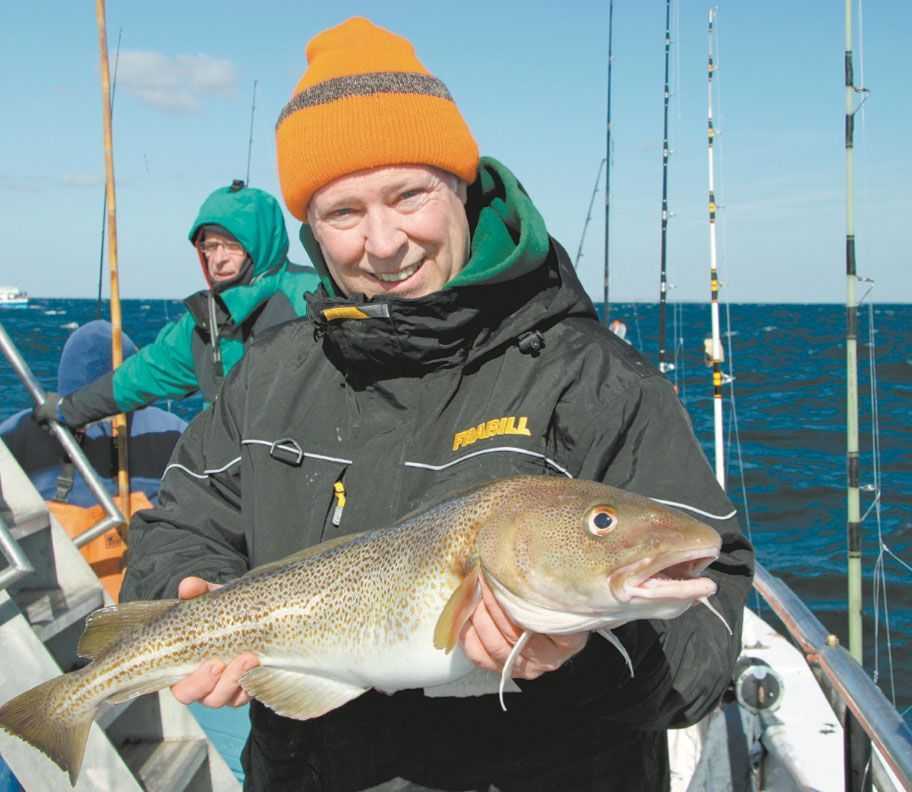For those who aren’t already smitten by codfish fever, it’s hard to imagine why anyone would make the time to head offshore under the most adverse of conditions. Yet, for some reason, winter season baccala hold an allure for many that’s nearly impossible, to deny.
Perhaps it’s the chance to land a real “soaker,” as slob cod are sometimes called. Codfish exceeding 60 pounds have been decked within a two-hour ride from virtually any northeast sea-
going port, and 20 to 40- pounders are always a possibility. Or, perhaps, it’s the succulent, flaky white flesh of this species that causes anglers to wake at ungodly hours and drive to the docks. Probably, it’s a combination of the two, plus the desire to be in the company of other diehard admirers of the “Winter King.”
Whatever the reasons, if you are going to fight through biting cold, unsettled seas and family lambasting over your choice of how to spend your leisure time, you might as well maximize your success. Heading into the winter season, reports of local cod catches have been fairly consistent on the offshore grounds from Coxes Ledge and the Block Island area all the way west wrecks and broken bottom off of Shinnecock, Moriches, Fire Island and Jones inlets. Even better, the cod have been taken over a range of depths ranging from just a few miles off the beach to deep-water wrecks two hours or more from port.
With the fish spread over such an expanse of water, the hope is this coming cod season will get off to a solid start. Here’s a few tips that should help put you in the thick of the action right out of the gate.
MAKE SKIMMER THE MAIN COURSE
When it comes to bait, skimmer is king – but the vital point is to avoid overloading your hook. Look around the deck and watch the veterans that are catching the majority of the cod on any trip. Guaranteed the majority of them are using strips of clam cut into long thin ribbons.
Slice your clam strips about an inch wide, making sure that each piece has a part of the hard rim to anchor the hook. Wrap the middle of the ribbon around the shank, pass the hook through again and leave the end to flutter free in the current. The prime few pieces of bait in the bait bucket are always the siphon (neck) with some stringy, trailing ribbon. When you get one, thread the siphon over the point and up the shaft, then wrap the ribbon once or twice, and allow two or three inches to trail off the hook. Keep in mind that with clam baits, the full point and barb section of the hook should always be fully exposed.
JIG EARLY, BAIT LATE
January and the first half of February tend to see codfish feeding on herring and mackerel. Late winter, after the baitfish schools thin out, finds the codfish in more of scavenger mode. That means you should expect to diamond jig through mid-winter but plan to dunk bait from Valentine’s Day through April. It’s not a hard rule, but it makes sense most years.
When the cod are hot on jigs, anyone can catch. It’s not much different than jigging stripers, except that the water is deeper. Hop the jig off the bottom with a quick upward snap of the rod tip, then crank at a steady, medium to slow speed for eight to ten turns of the handle before repeating the process.
If the cod are thick and you want to score some double-header catches, use a dropper loop to tie a pink jelly worm, curly-tailed grub or surgical tube 20 to 30 inches above the jig. No matter what time of year, break out the diamonds if you see a few pollock start coming over the rail.
NOT TOO HEAVY
Many novice cod anglers assume winter cod fishing is a wrestling match pitting heavy weights and giant rods against lunkers that suffer “the bends” half-way up from the bottom. That may be the case on offshore wrecks during the summer, but winter codding is generally concentrated in 60- to 140-foot depths. This allows anglers to use 30-pound-test mono or 50-pound-test braided setups that are quite sensitive and provide the cod a chance to put up a respectable battle. Think of your favorite conventional striper or bluefish setup and you’ll be on the right track.
Whether you drift or anchor, a high-low rig featuring 5/0 sproat- or octopus-style hook will get the job done. Many anglers prefer a larger, 6/0 or even 8/0 hook, but that’s overkill for the winter game. Most of the cod you’ll catch will weigh less than 12 pounds, and a 20-pounder will usually win or at least contend for the pool. Besides, a 5/0 has plenty enough holding power to deck anything that swallows it. So does a 3/0 Octopus style Gamakatsu.
REEL WITH PURPOSE
I find it amazing how many cod are lost after being hooked. I would expect it of the big fish, but even market cod seem to have a knack for shaking the hook by the half-way point. I think the reason that baccala slip the hook most of the time is because anglers crank them viciously toward the surface.
Take your time reeling up once you’ve set the hook on a solid fish. Reel with purpose and keep the line taught at all times. Raise the cod quickly off the bottom with the hook set, then crank steadily at a controlled pace to bring your trophy to the surface.
DRESS FOR SUCCESS
As is always the case with offshore winter fishing, you’ll need to be prepared to deal with the elements. It gets cold on the water during the winter months so come prepared to deal with sub-freezing temperatures and a hawkish wind.
Dress in layers with thermals or insulated long underwear as your foundation, wear waterproof boots and fluffy socks, a knit hat, hooded sweatshirt, and a pair of neoprene or waterproof gloves. Bring along your rain slicks, plus a couple of rags to help wipe water and fish slime off your hands and gear. For the past couple of years, I’ve been wearing a Frabill FXE Stormsuit. The combination of bib and jacket sure does keep me warm. That equates to more time at the rail and, ultimately, more fish in the pail.













